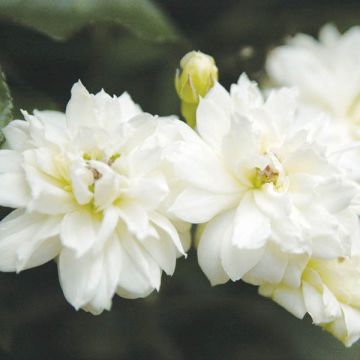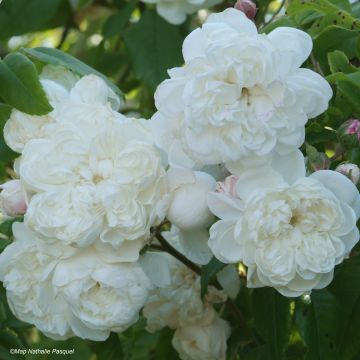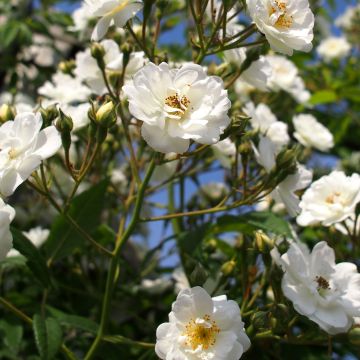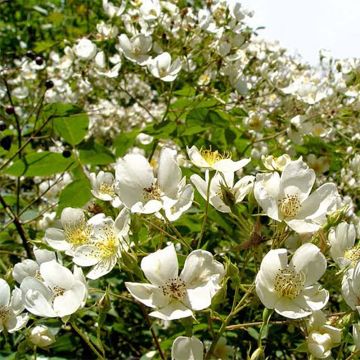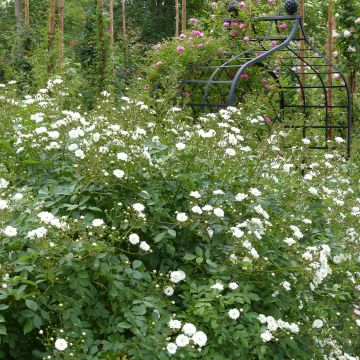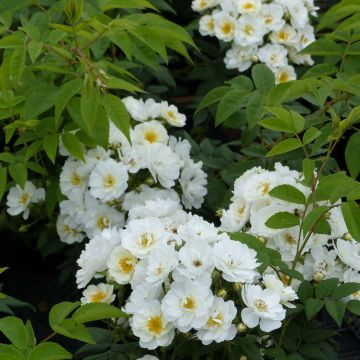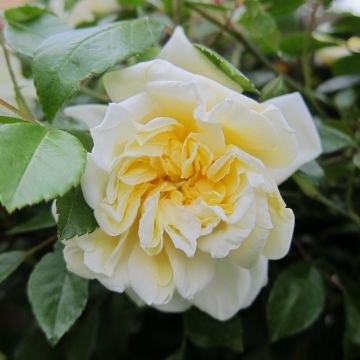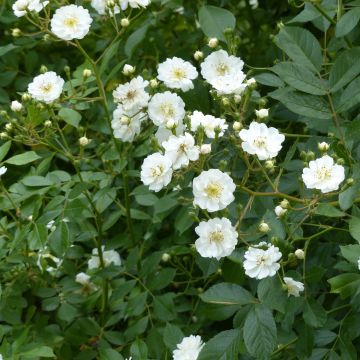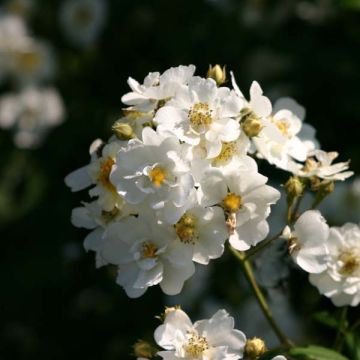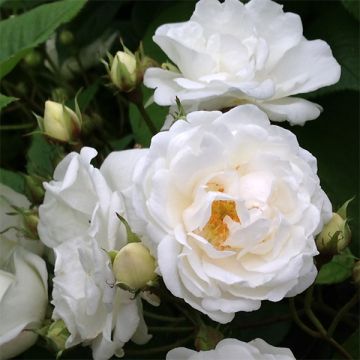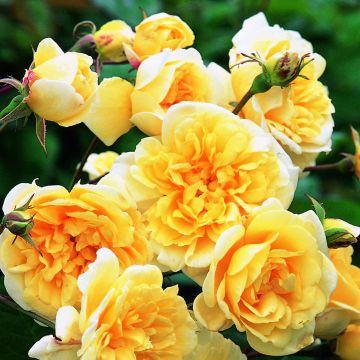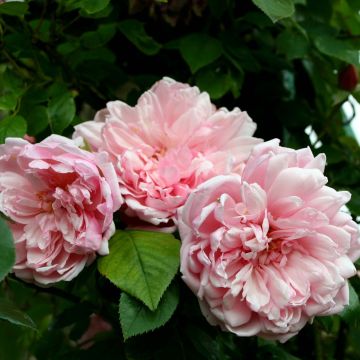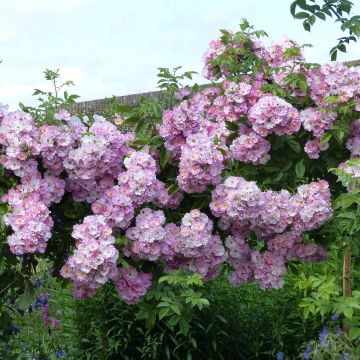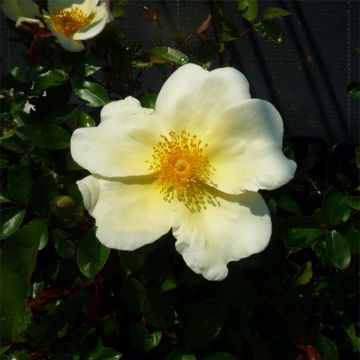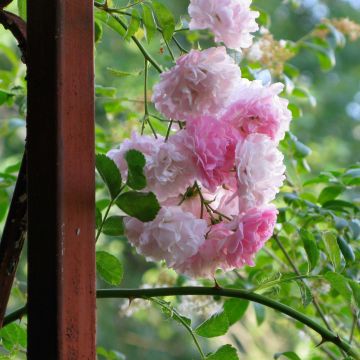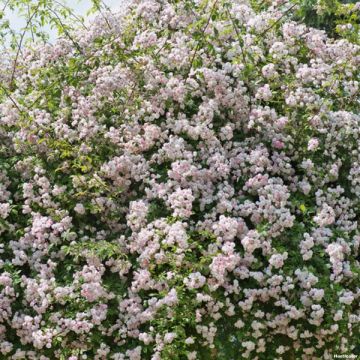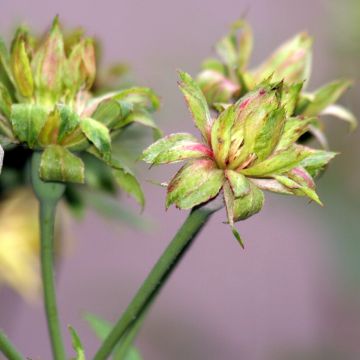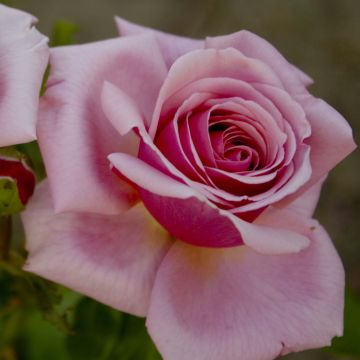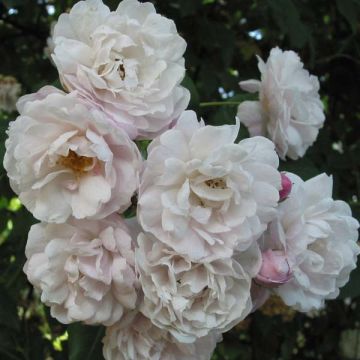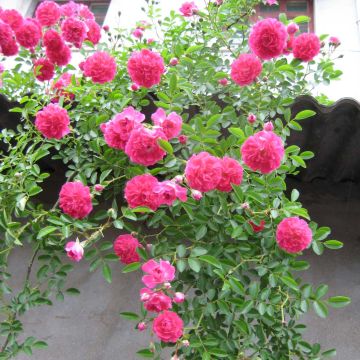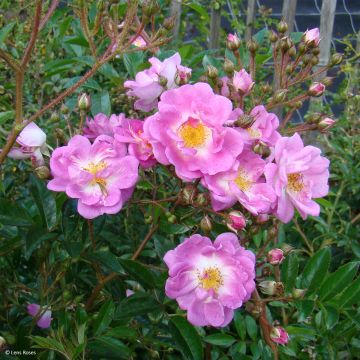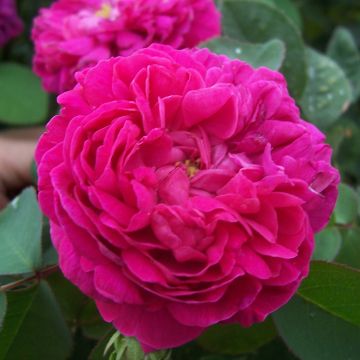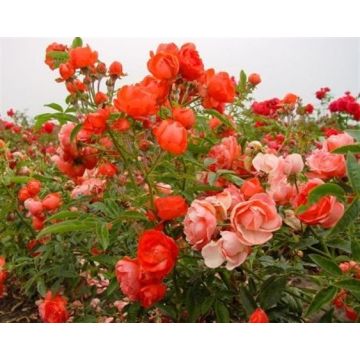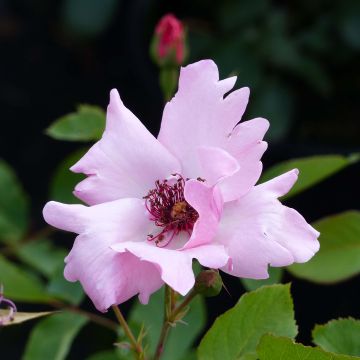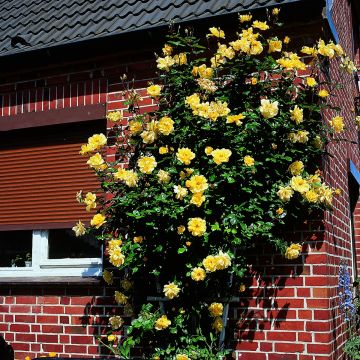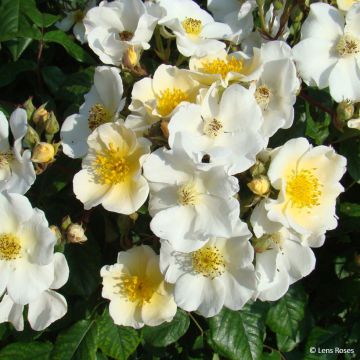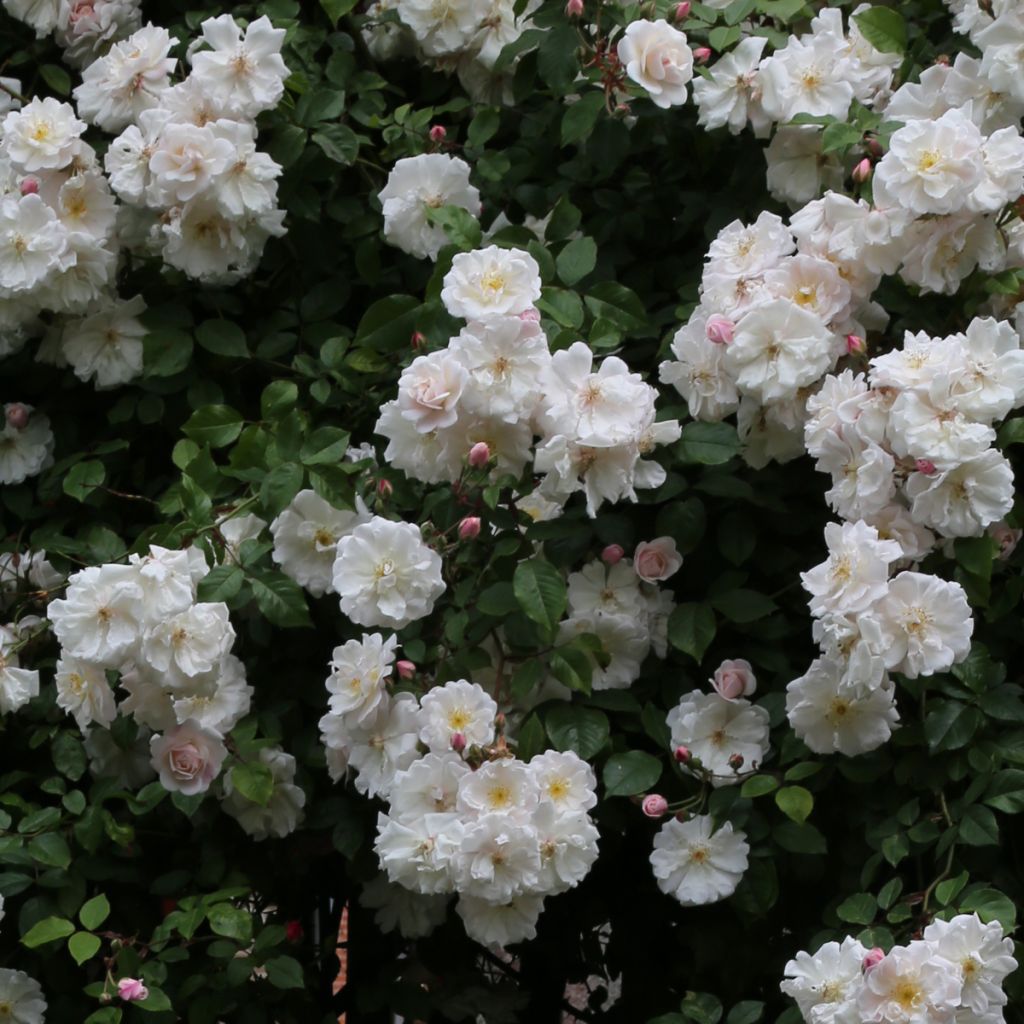

Rosa x sempervirens 'Adélaïde d’Orléans' - Rambling Rose
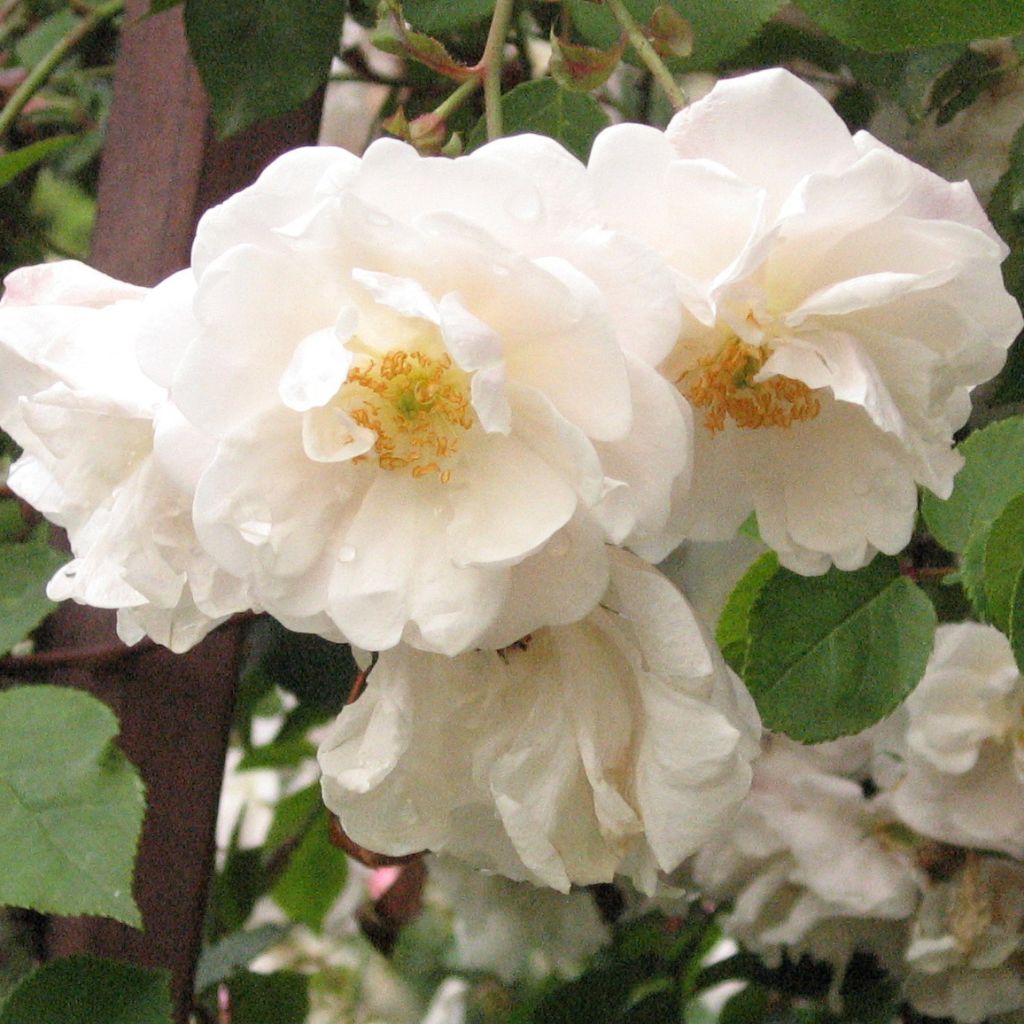

Rosa x sempervirens 'Adélaïde d’Orléans' - Rambling Rose
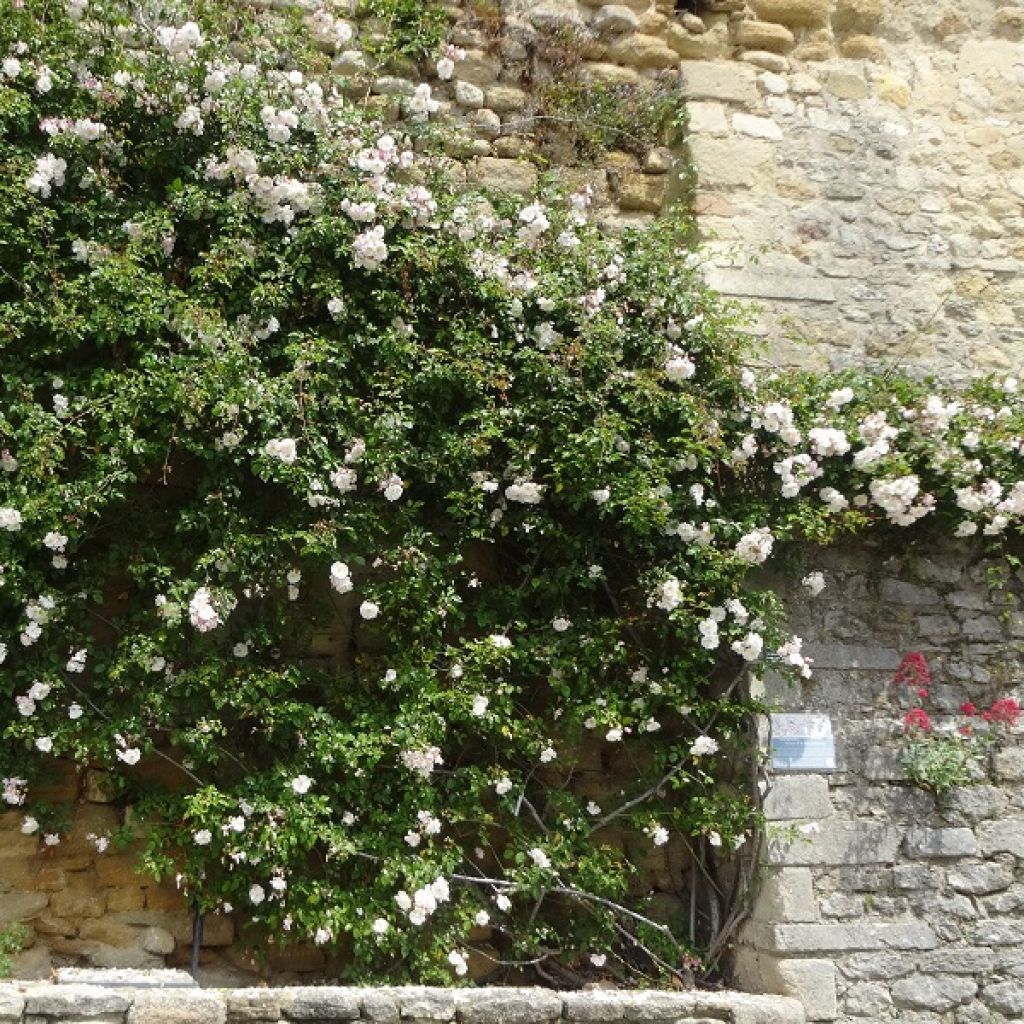

Rosa x sempervirens 'Adélaïde d’Orléans' - Rambling Rose
Rosa x sempervirens 'Adélaïde d’Orléans' - Rambling Rose
Rosa x sempervirens Adélaïde d’Orléans
Evergreen Rose, Sempervirens Rose
Received rose bush with plastic packaging even though I had ordered without. Promesse de fleurs apologized and made the necessary arrangements to refund 1 euro. In April, the plant started to turn brown, and the rose bush did not recover. Promesse de fleurs committed to refunding the rose bush. It's a shame about this failure, as I was hoping to see this rose bush grow this year. The delivered plant had small roots, perhaps too young.
daniel E., 07/05/2023
Why not try an alternative variety in stock?
View all →This plant carries a 24 months recovery warranty
More information
We guarantee the quality of our plants for a full growing cycle, and will replace at our expense any plant that fails to recover under normal climatic and planting conditions.
From €5.90 for pickup delivery and €6.90 for home delivery
Express home delivery from €8.90.
From €5.90 for pickup delivery and €6.90 for home delivery
Express home delivery from €8.90.
Delivery to Corse prohibited: UE law prohibits the import of this plant from mainland France to Corse as part of the fight against Xylella fastidiosa. Please accept our sincere apologies.
More information

Does this plant fit my garden?
Set up your Plantfit profile →
Description
The 'Adelaide d'Orleans Rose is a recognisable climbing rose thanks to its unique, flexible and relaxed habit, which gives it an inimitable charm. It is also easily identified by its late but remarkably abundant flowering in mid-June, with semi-double roses of medium size, delicately tinged with pink on a creamy white background and a sweet scent of primrose. They mix with pink buds on their branches, perfectly highlighted by very dark green, evergreen foliage under most climates. This variety, derived from Rosa sempervirens, is not the hardiest, but it is undemanding and truly graceful when guided on an arch or pergola.
This large rose is an old cultivar, commercialised since 1826, descended from Rosa chinensis and the evergreen rose (Rosa sempervirens). The latter is native to southern Europe, North Africa, and Asia Minor. Roses derived from sempervirens are generally evergreen, vigorous (and sometimes a little frost-sensitive), and tolerate dry soils, hot climates, and the partial shade of woodlands. 'Adelaide d'Orleans' was born in the hands of Jacques, the head gardener of the Duke of Orleans (later known as Louis Philippe), and the numerous qualities with which it was endowed have allowed it to age without a wrinkle. It forms a vigorous rambler that will easily reach 4 to 5m (16ft) in height with a spread of 2 to 3m (7 to 10ft). Its long stems are very flexible, adorned with a few small, curved prickles, and covered with abundant and very healthy foliage of a shiny dark green colour. The flowers of this variety emerge from very pretty pink buds. They form abundantly, from mid-June for 3 weeks, hiding all the foliage. There is sometimes a very slight autumnal reblooming. The buds open into semi-double flowers, 6 cm (2in) in diameter, slightly inclined, reminiscent of cherry blossoms. Delicious and charming, they exhale a sweet, floral and fresh fragrance. The small red-orange fruits that delight birds in the winter are fleshy false fruits called hips. They contain a large quantity of achenes, each with a single seed.
'Adelaide d'Orleans' is a carefree and beautiful rose that thrives everywhere. It is so undemanding that it accepts rather dry soils in summer and performs very well in partial shade, especially in warmer areas. If allowed to grow freely, it will become almost as wide as it is tall, displaying the exuberance of its growth and extraordinary flowering. Like no other liana, it looks slightly abandoned to an arch planted above a pathway or in the background of overly strict flowerbeds. This plant makes for a great companion to both dead and living trees, as well as uncertain fences and unsightly buildings or sheds. It adds a charming touch to any area it's planted in. As it only blooms once, it can be paired with other plants like viticella Purpurea Plena or texensis Princess Kate clematis, which will take over and tolerate relatively dry soils if they are deep enough.
Report an error about the product description
Rosa x sempervirens 'Adélaïde d’Orléans' - Rambling Rose in pictures
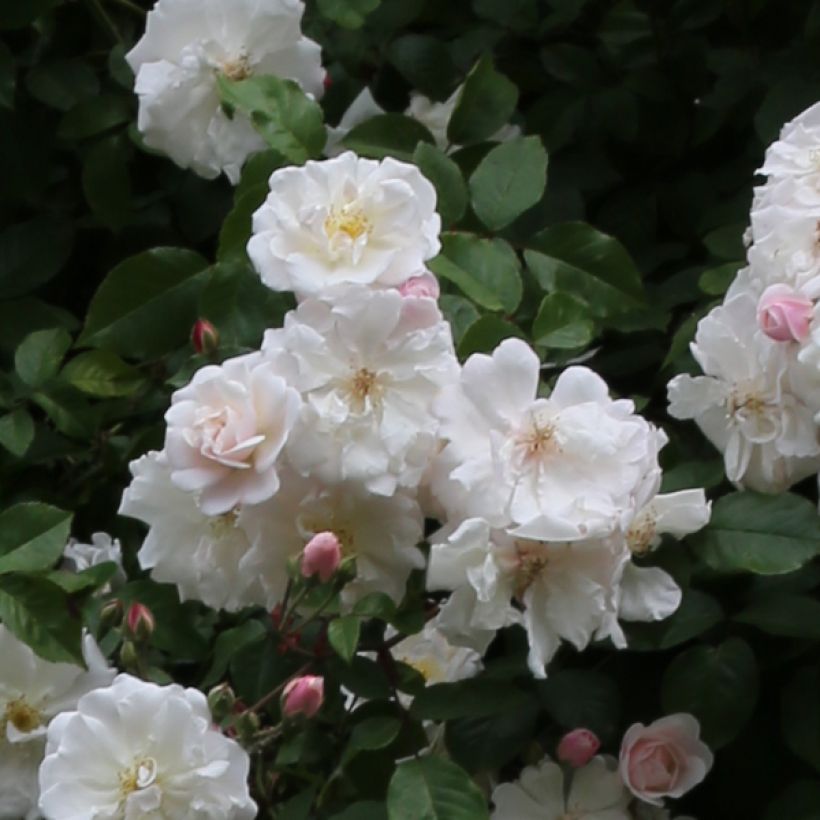

Plant habit
Flowering
Foliage
Botanical data
Rosa
x sempervirens
Adélaïde d’Orléans
Rosaceae
Evergreen Rose, Sempervirens Rose
Cultivar or hybrid
Rosa canina Laxa (Wrapped bare root)
Other Rambling Roses
Planting and care
The 'Adelaide of Orleans' rose can be grown in any well-drained, deep soil, including those that are dry in summer. However, proper care must be taken during planting and the rose should not be deprived of water or nutrients during the first two years. It is recommended to plant it in well-prepared and well-drained soil that receives full sun in cooler climates and in semi-shaded areas elsewhere. It is best to plant it in autumn and avoid planting during freezing conditions.
Trimming the stems that flowered the previous year to 3 or 4 buds or pruning them to 15 cm (6in) is recommended. The new sturdy stems should be trained, and the old ones removed, if necessary. The most floriferous branches are those that are two years old. This moderately hardy rose can tolerate temperatures as low as -12/-15°C (10.4/5°F) in healthy, well-drained soil. Dead wood should be removed in winter, and faded flowers should be removed if fruit formation is not desired.
If required, light pruning can be done in spring after the risk of frost has passed. Climbing roses can be left to grow freely if ample space is available. However, it is important to note that if you plant a climbing rose near a living tree, the root system of the rose will compete with that of the already-established tree. To control watering, it is recommended to plant the rose in a large container with a perforated bottom at the base of the tree. The tree roots will not penetrate the container for at least a year. After a year, the container should be removed, for example, by cutting one side, without disturbing the rose's root system. By doing so, the rose will have had enough time to develop its root system deep into the soil, making it more resistant.
Roses may develop unsightly spots at the end of summer, but this is a natural occurrence and doesn't harm the rose's growth.
Planting period
Intended location
Care
-
, onOrder confirmed
Reply from on Promesse de fleurs
Traditional Roses
Haven't found what you were looking for?
Hardiness is the lowest winter temperature a plant can endure without suffering serious damage or even dying. However, hardiness is affected by location (a sheltered area, such as a patio), protection (winter cover) and soil type (hardiness is improved by well-drained soil).

Photo Sharing Terms & Conditions
In order to encourage gardeners to interact and share their experiences, Promesse de fleurs offers various media enabling content to be uploaded onto its Site - in particular via the ‘Photo sharing’ module.
The User agrees to refrain from:
- Posting any content that is illegal, prejudicial, insulting, racist, inciteful to hatred, revisionist, contrary to public decency, that infringes on privacy or on the privacy rights of third parties, in particular the publicity rights of persons and goods, intellectual property rights, or the right to privacy.
- Submitting content on behalf of a third party;
- Impersonate the identity of a third party and/or publish any personal information about a third party;
In general, the User undertakes to refrain from any unethical behaviour.
All Content (in particular text, comments, files, images, photos, videos, creative works, etc.), which may be subject to property or intellectual property rights, image or other private rights, shall remain the property of the User, subject to the limited rights granted by the terms of the licence granted by Promesse de fleurs as stated below. Users are at liberty to publish or not to publish such Content on the Site, notably via the ‘Photo Sharing’ facility, and accept that this Content shall be made public and freely accessible, notably on the Internet.
Users further acknowledge, undertake to have ,and guarantee that they hold all necessary rights and permissions to publish such material on the Site, in particular with regard to the legislation in force pertaining to any privacy, property, intellectual property, image, or contractual rights, or rights of any other nature. By publishing such Content on the Site, Users acknowledge accepting full liability as publishers of the Content within the meaning of the law, and grant Promesse de fleurs, free of charge, an inclusive, worldwide licence for the said Content for the entire duration of its publication, including all reproduction, representation, up/downloading, displaying, performing, transmission, and storage rights.
Users also grant permission for their name to be linked to the Content and accept that this link may not always be made available.
By engaging in posting material, Users consent to their Content becoming automatically accessible on the Internet, in particular on other sites and/or blogs and/or web pages of the Promesse de fleurs site, including in particular social pages and the Promesse de fleurs catalogue.
Users may secure the removal of entrusted content free of charge by issuing a simple request via our contact form.
The flowering period indicated on our website applies to countries and regions located in USDA zone 8 (France, the United Kingdom, Ireland, the Netherlands, etc.)
It will vary according to where you live:
- In zones 9 to 10 (Italy, Spain, Greece, etc.), flowering will occur about 2 to 4 weeks earlier.
- In zones 6 to 7 (Germany, Poland, Slovenia, and lower mountainous regions), flowering will be delayed by 2 to 3 weeks.
- In zone 5 (Central Europe, Scandinavia), blooming will be delayed by 3 to 5 weeks.
In temperate climates, pruning of spring-flowering shrubs (forsythia, spireas, etc.) should be done just after flowering.
Pruning of summer-flowering shrubs (Indian Lilac, Perovskia, etc.) can be done in winter or spring.
In cold regions as well as with frost-sensitive plants, avoid pruning too early when severe frosts may still occur.
The planting period indicated on our website applies to countries and regions located in USDA zone 8 (France, United Kingdom, Ireland, Netherlands).
It will vary according to where you live:
- In Mediterranean zones (Marseille, Madrid, Milan, etc.), autumn and winter are the best planting periods.
- In continental zones (Strasbourg, Munich, Vienna, etc.), delay planting by 2 to 3 weeks in spring and bring it forward by 2 to 4 weeks in autumn.
- In mountainous regions (the Alps, Pyrenees, Carpathians, etc.), it is best to plant in late spring (May-June) or late summer (August-September).
The harvesting period indicated on our website applies to countries and regions in USDA zone 8 (France, England, Ireland, the Netherlands).
In colder areas (Scandinavia, Poland, Austria...) fruit and vegetable harvests are likely to be delayed by 3-4 weeks.
In warmer areas (Italy, Spain, Greece, etc.), harvesting will probably take place earlier, depending on weather conditions.
The sowing periods indicated on our website apply to countries and regions within USDA Zone 8 (France, UK, Ireland, Netherlands).
In colder areas (Scandinavia, Poland, Austria...), delay any outdoor sowing by 3-4 weeks, or sow under glass.
In warmer climes (Italy, Spain, Greece, etc.), bring outdoor sowing forward by a few weeks.

































